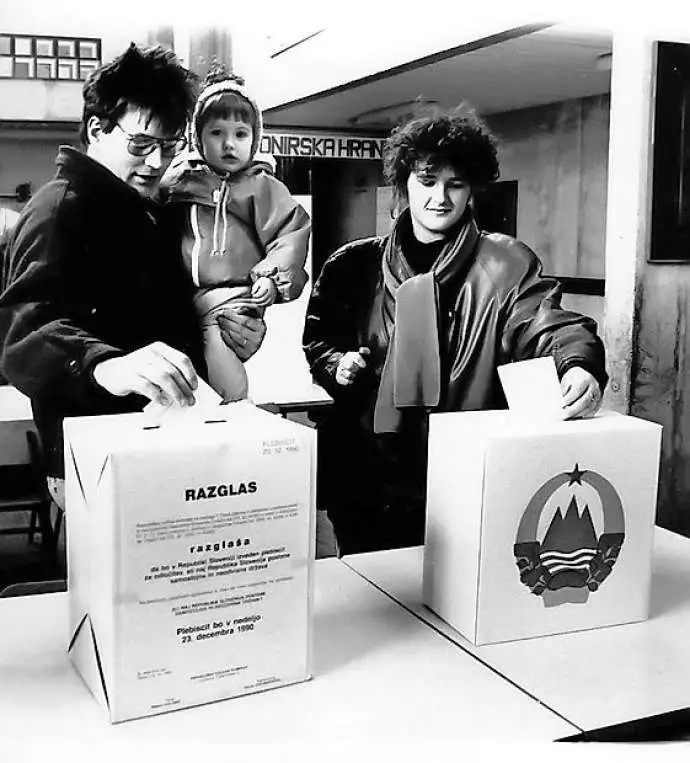STA, 25 June 2020 - Slovenia's population is ageing, while the number of residents is increasing on the back of immigration, show data for the 1991-2020 period published by the Statistics Office to mark Statehood Day. The state of the Slovenian economy is improving since the country declared independence, as are connections with foreign markets.
Marking Statehood Day on 25 June, the day in 1991 when Slovenia declared independence from Yugoslavia, the Statistics Office said that on 1 January 2020, Slovenia had 2,095,861 residents or 15,000 more year-on-year.
There were 1,051,066 men and 1,044,79 women, with men outnumbering women primarily because of the growing number of immigrants, who are mostly men.
Slovenia's population has been increasing in the last 25 years, as has its average age. At the beginning of 2019, the average age of a Slovenian resident was 43.4, which is two years more than ten years ago. A fifth of Slovenians are aged 65 or older.
Following the declaration of independence, Slovenia's economy experienced a blow as it lost the ex-Yugoslav market, introduced market economy and faced a high inflation rate. It was almost 250% in 1991, and it took four years to drop below 10%.
In 1991, Slovenia's gross domestic product (GDP) dropped in real terms by 8.9%, and by a further 5.5% in 1992. After a longer and relatively stable period, it was down by 7.8% in 2009 at the peak of the global economic and financial crisis.
Up until this spring, the Slovenian economy was recovering at an annual pace of between 3% and 5%. In the first quarter of 2020, the country's GDP was meanwhile down by 2.3% compared to the same quarter last year.
In the first quarter of the year, the very end of which was also marked by the coronavirus epidemic, foreign and domestic demand was also down.
In terms of GDP per capita, Slovenia placed 16th last year among the 28 EU member states.
Germany has remained Slovenia's most important trade partner all these years, while within the EU, Slovenia's trade with Austria increased the most. Outside the EU, Slovenia has exported most of its goods to the countries of the former Yugoslavia and to China.
In the 1991-2020 period, the Statistics Office recorded the highest unemployment rate in the first quarter of 2011, at 11.1%, while the lowest rate, at 4%, was recorded in the last quarter of 2019, when only 41,000 persons were unemployed.
The number of tourists visiting Slovenia has been mostly increasing since 1991, reaching a record 6.2 million last year. The figures are expected to be much lower this year as tourism was ground to a halt in mid-March and is still recovering.
You can see more on these statistics here






